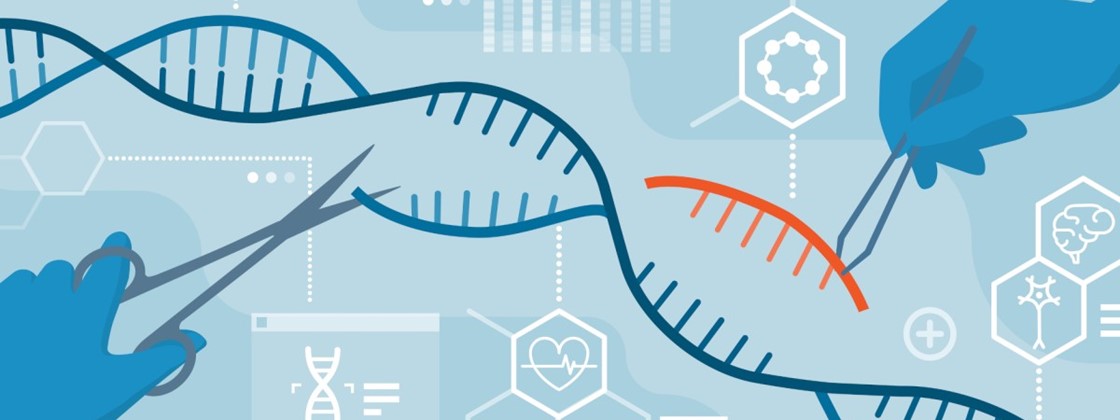The discovery and recent advances in the CRISPR/Cas-9 gene-editing technology have profoundly reshaped the field of genome engineering and allowed the generation of a wide range of mutant cell lines at an unprecedented rate.
Why do we need to carefully monitor the genomic integrity of iPSCs after CRISPR/Cas9-based gene editing ?
The delivery of the Cas-9 nuclease and a specific guide RNA (gRNA) allow producing DNA double strand breaks at the target site. The subsequent endogenous repair mechanisms will lead to the desired genetic edits, essentially gene knockouts and DNA insertions.
By combining the CRISPR/Cas-9 gene-editing technology with human pluripotent stem cells (hPSCs), new opportunities are created to study disease mechanisms and to develop innovative cell products, with huge therapeutic potential.1
However, CRISPR/Cas-9 gene editing in hPSCs can also pose a threat to the overall genomic integrity
• Indeed, genetic abnormalities can be introduced directly by impaired repair processes or by a double strand DNA break induced by Cas-9 at another locus in the genome (off-target effect).
• Moreover, CRISPR/Cas-9 gene editing implies major sequential and potentially stressful events, such as cell transfection, flow cytometry-based cell sorting, clonal expansion, drug selection, manual colony picking or single-cell dissociation.
• These procedures could favour the generation and selection of genetically abnormal hPSCs, with higher proliferation and survival capacities, or reduced differentiation potential. As they reflect a selection pressure, these defects are frequently observed in hPSC cultures and mainly consist in copy number variations 2-3.
A risk of random transgene integration
One of the major drawbacks of the CRISPR/Cas-9 technology is the risk of Cas-9 unintended binding to off-target sites where complex genomic events may take place after DNA double-strand breakage.
• This can result in the integration of the transgene at a place different and distant from the selected target. This is particularly true when large transgenes are delivered using plasmid-based systems.
• To determine whether DNA donor templates have been inserted at off-target sites, specific assays must be used to assess the number of transgenes integrated in the genome.
1. Mianné J, Bourguignon C, Nguyen Van C, et al. Pipeline for the Generation and Characterization of Transgenic Human Pluripotent Stem Cells Using the CRISPR/Cas9 Technology. Cells. 2020;9(5):1312. Published 2020 May 25.
2. Assou S, Bouckenheimer J, and De Vos J. Concise Review: Assessing the Genome Integrity of Human Induced Pluripotent Stem Cells: What Quality Control Metrics? Stem Cells. 2018; 36: 814-821
3. Assou S, Girault N, Plinet M, et al. Recurrent Genetic Abnormalities in Human Pluripotent Stem Cells: Definition and Routine Detection in Culture Supernatant by Targeted Droplet Digital PCR. Stem Cell Reports. 2020;14(1):1-8



